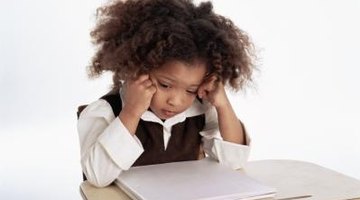In a multicultural classroom, students from various ethnic, linguistic and social backgrounds study together from the same curriculum. While this kind of cross-cultural learning is beneficial in many ways, there are some disadvantages for both students and teachers. Students from different cultures are often English language learners and may have assumptions that teachers do not expect, presenting a different set of challenges than a monocultural class does.
Language Barrier
Teaching hinges on meaningful communication between instructors and students. This is much harder to achieve when the students have imperfect mastery of the language in which the class is being taught. In a multicultural classroom, many of the students may understand only some of what the teacher says and may lack the vocabulary to ask detailed questions. Some students may be too embarrassed to speak at all. Teachers may struggle to figure out how thoroughly their students are understanding the material and may not be able to persuade the students to seek additional help.

Cultural Behaviors
The basic systems for presenting arguments vary across cultures. Americans are taught from an early age to be direct and specific; in academic writing and discussions, they are taught to state their premise, support it, refute the other viewpoints and conclude strongly. People from other cultures may have been raised to be nonconfrontational, submissive or otherwise indirect. Teachers may find that students with these mindsets struggle to write persuasive essays in the American style or to participate fully in class discussions, because doing so requires that they rewrite cultural training.
Family
Teachers of multicultural classes may be at a disadvantage when it comes to communicating with their students' parents. Even if the child has a solid command of the English language, his parents may not, making it very difficult for teachers to be certain that they are well-informed about and participatory in his education. Teachers of multicultural classes may also find that some parents have different expectations than others regarding the importance of a classroom education, particularly for girls.

Teacher Preparedness
Given that students from different cultures have different values, assumptions, expectations and behavioral patterns, teachers in multicultural classrooms must be prepared to handle the conflicts and miscommunications that can stem from this. Cultural beliefs are deeply ingrained but unspoken, and people often are not aware of their own cultural rules until those rules are violated. Teachers can easily break rules their students cannot even articulate, or may unknowingly demand that the students break them themselves, creating a deeply uncomfortable situation for the student.

Related Articles
References
Writer Bio
Stephanie Mitchell is a professional writer who has authored websites and articles for real estate agents, self-help coaches and casting directors. Mitchell also regularly edits websites, business correspondence, resumes and full-length manuscripts. She graduated from Syracuse University in 2007 with a Bachelor of Fine Arts in musical theater.











